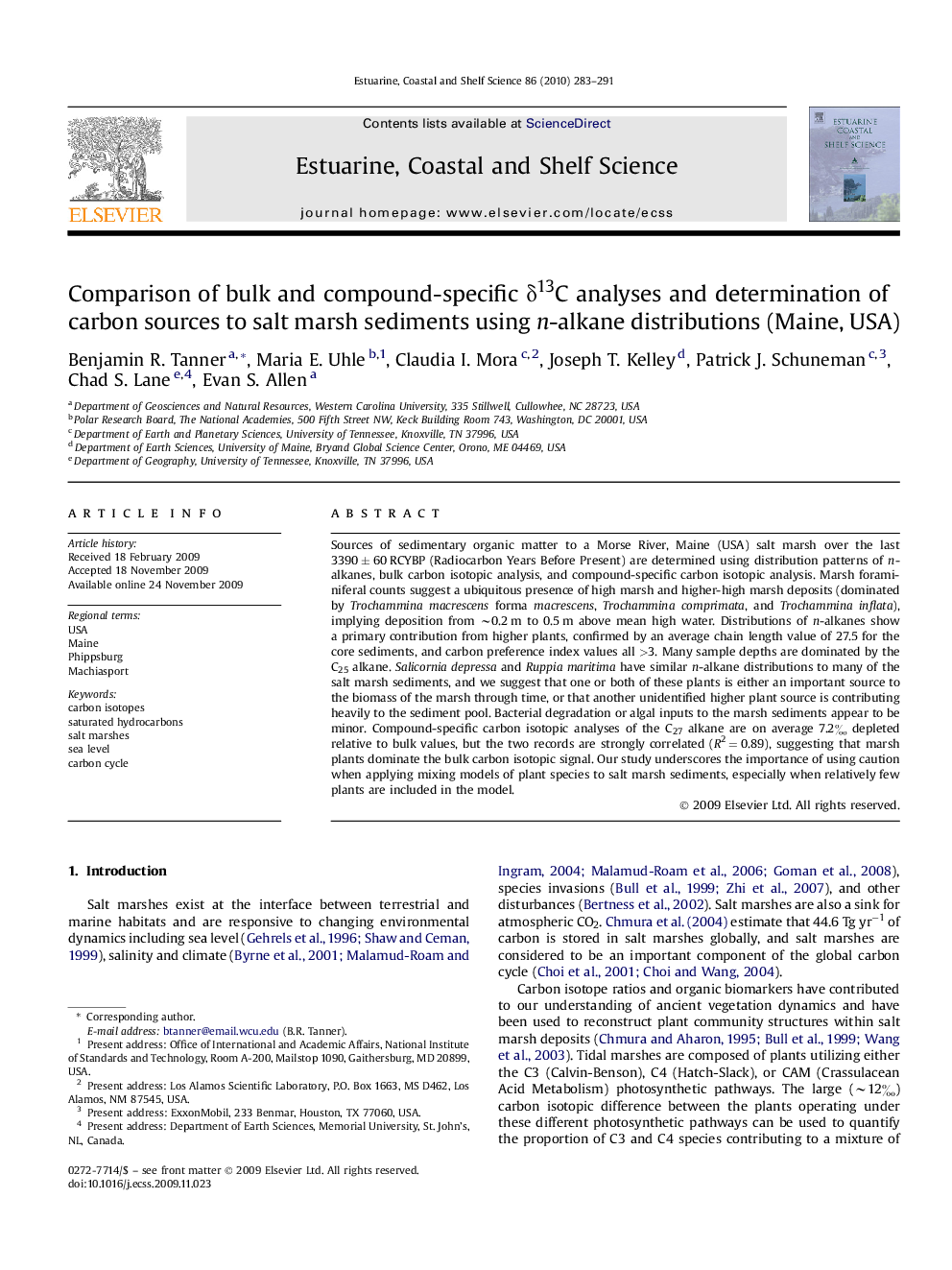| Article ID | Journal | Published Year | Pages | File Type |
|---|---|---|---|---|
| 4541040 | Estuarine, Coastal and Shelf Science | 2010 | 9 Pages |
Sources of sedimentary organic matter to a Morse River, Maine (USA) salt marsh over the last 3390 ± 60 RCYBP (Radiocarbon Years Before Present) are determined using distribution patterns of n-alkanes, bulk carbon isotopic analysis, and compound-specific carbon isotopic analysis. Marsh foraminiferal counts suggest a ubiquitous presence of high marsh and higher-high marsh deposits (dominated by Trochammina macrescens forma macrescens, Trochammina comprimata, and Trochammina inflata), implying deposition from ∼0.2 m to 0.5 m above mean high water. Distributions of n-alkanes show a primary contribution from higher plants, confirmed by an average chain length value of 27.5 for the core sediments, and carbon preference index values all >3. Many sample depths are dominated by the C25 alkane. Salicornia depressa and Ruppia maritima have similar n-alkane distributions to many of the salt marsh sediments, and we suggest that one or both of these plants is either an important source to the biomass of the marsh through time, or that another unidentified higher plant source is contributing heavily to the sediment pool. Bacterial degradation or algal inputs to the marsh sediments appear to be minor. Compound-specific carbon isotopic analyses of the C27 alkane are on average 7.2‰ depleted relative to bulk values, but the two records are strongly correlated (R2 = 0.89), suggesting that marsh plants dominate the bulk carbon isotopic signal. Our study underscores the importance of using caution when applying mixing models of plant species to salt marsh sediments, especially when relatively few plants are included in the model.
